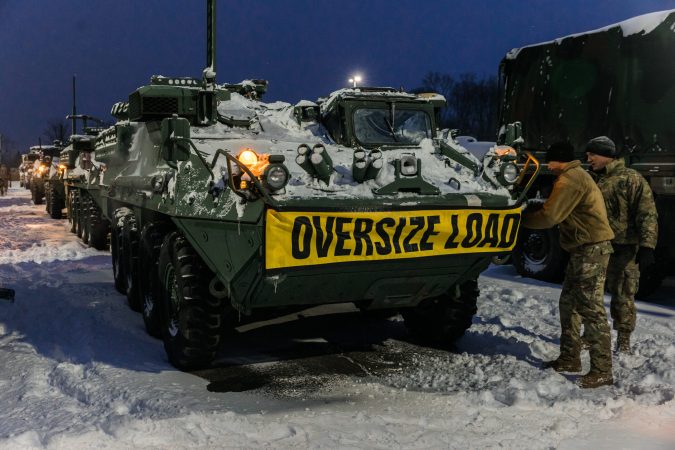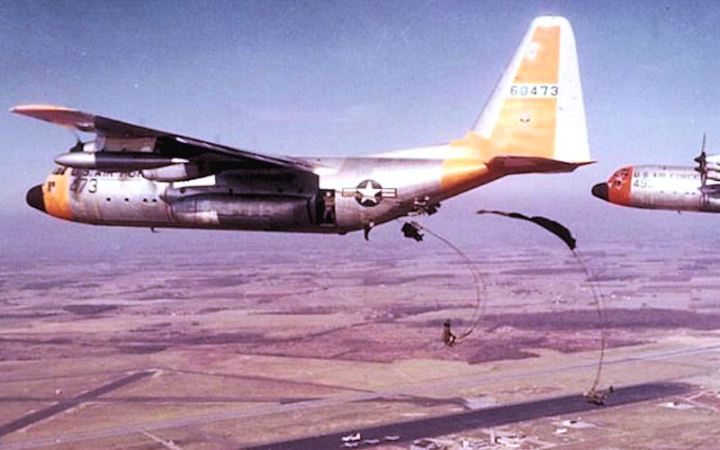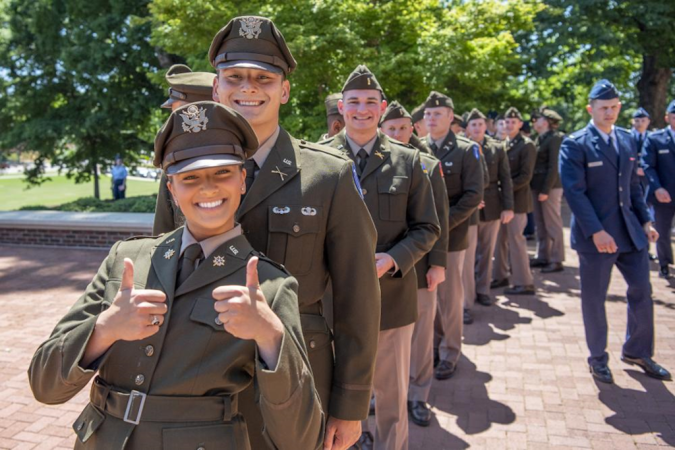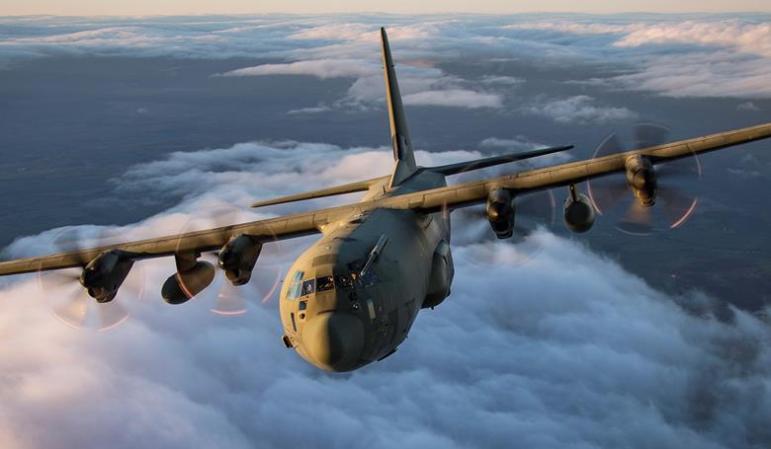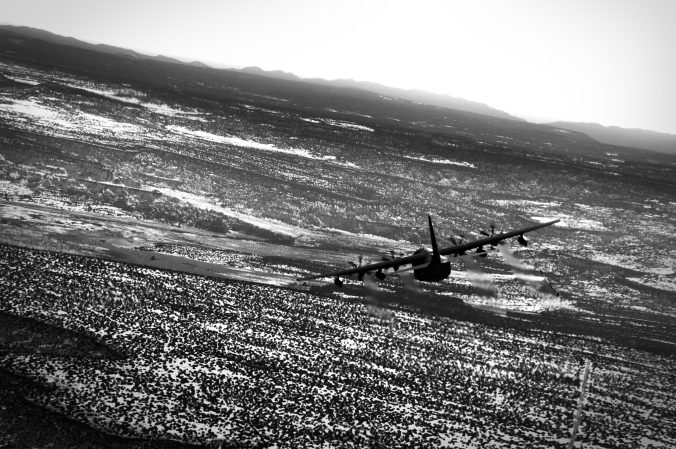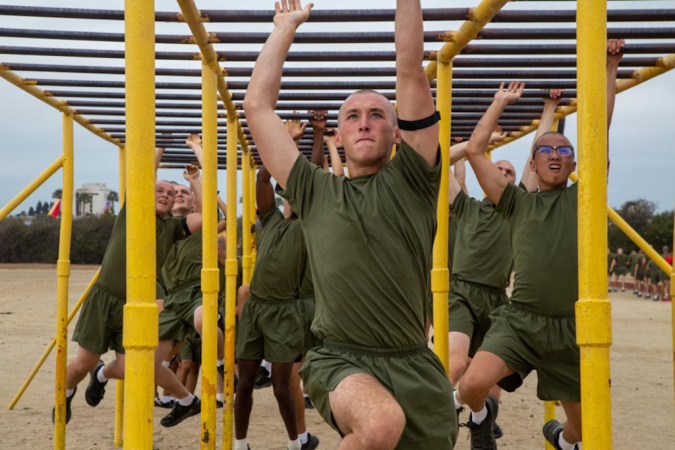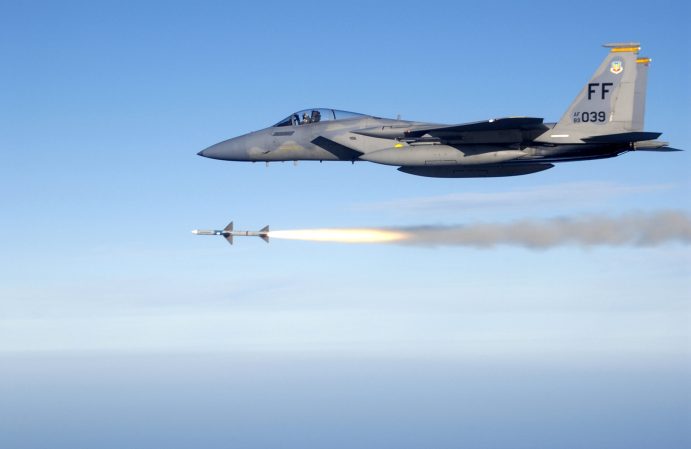The C-130 is one of the workhorses among American military planes, performing a wide range of missions from humanitarian relief to law enforcement to bombing missions. Here’s a rundown of 15 of them:
1. Close air support

Let’s get this one out of the way, because the AC-130 is most people’s favorite version. These flying gunships have carried a variety of guns over the years, everything from 7.62mm miniguns to 105mm cannons. One of the most famous was the AC-130U “Spooky” with 25mm, 40mm, and 105mm guns.
2. Anti-surface and anti-submarine warfare

Guns aren’t the only weapon that has been strapped to what was originally a resupply plane. Lockheed Martin has designed, but not sold, the SC-130J Sea Herc. The aircraft is pitched as a cheap, high-endurance, and high-payload maritime patrol and anti-surface/anti-submarine plane.
It’s equipped with sensors to find the enemy ships and subs as well as torpedoes and anti-ship missiles to prosecute them.
3. Bomber

Of course, if it can bomb a ship then it can bomb a building. The most precise and imposing C-130 bombers are the Air Force’s Stinger II and the Marine Corps’ Harvest Hawk, both of which fire precision missiles and bombs.
On the other end of the spectrum are the C-130s that took part in improvised bombing missions in Vietnam. Daisy Cutter bombs were carried in C-130s and dropped into the jungle.
4. Firefighting

When the U.S. Forest Service finds itself overwhelmed fighting wildfires, it turns to the Air Force for assistance. C-130s are outfitted with Modular Airborne Fire Fighting Systems that can drop 3,000 gallons of repellant in 5 seconds without any major modifications to the aircraft.
5. Airborne

The C-130 can drop 64 fully-armed paratroopers into combat on a single pass. With additional passes or a long drop zone, they can also drop “door bundles” with ammunition and other supplies ahead of the soldiers.
Some equipment, like Humvees and 105mm cannons, can also be dropped from the back of the plane.
6. Aerial refueling

The KC-130J can carry up to 47,903 pounds of fuel to give to other aircraft. The Marine Corps racked up over 20,000 hours of KC-130J flight over Iraq where the birds dispensed jet fuel to bombers supporting troops on the ground.
7. Search and rescue

Both the Air Force and the Coast Guard fly HC-130s modified for search and rescue missions. The planes feature command and control computer suites as well as special sensors that help it find survivors in the water or on land.
The Air Force’s version also packs a refueling capability so that it can bring helicopters with it on long-range missions.
8. Law enforcement

The Coast Guard’s HC-130s can use their sensors to find and track people suspected of crime. The planes can patrol a large area and, if they spot suspicious activity in the water, can track criminals from afar or chase them down.
9. Weather monitoring

The Air Force’s 53rd Weather Reconnaissance Squadron flies WC-130Js into tropical storms and hurricanes to collect weather data. The modified C-130s feature external fuel tanks and weather sensors, but are not structurally reinforced. The Herc survives the high winds on its own.
The Coast Guard uses their C-130s to track and monitor icebergs and other threats to shipping.
10. Aeromedical evacuation

There are 31 aeromedical squadrons in the U.S. Air Force. The units fly wounded troops and civilians out of war and disaster zones on C-130s and C-17s filled with special mission pallets and medical equipment. Teams of doctors and nurses accompany the wounded.
11. Transport and resupply

The C-130 was originally a cargo plane, and the transport and resupply mission is its bread and butter. It does get fancy with the work though, dropping armored vehicles and other equipment from its ramp without landing.
12. Flying radio station

The EC-130J Commando Solo is used by Military Information Support Operation, more commonly known as PSYOPS, and civil affairs service members to broadcast radio messages to people in disaster and war zones.
13. Airborne command center

The EC-130E carries the USC-48 Airborne Battlefield Command and Control Center Capsules which allow commanders to ride to battle in the plane and control their troops from overhead. The high-tech center takes a lot of computer power, but it carries extra fuel and special air conditioning systems to keep all the electronics powered and cool.
14. Electromagnetic warfare

When the Air Force needs to shut down some enemy air defenses, it it can put the EC-130H Compass Call into the game. The plane disrupts enemy communication nodes and jams early warning and acquisition radars, allowing fighters and bombers to slip through enemy lines and wreak havoc.
15. Humanitarian relief

The C-130, with the ability to land on dirt strips where jets fear to tread, is one of the heroes of humanitarian relief. After a major disaster, the C-130s form a flying train that rushes medical supplies and food in while ferrying wounded out.





